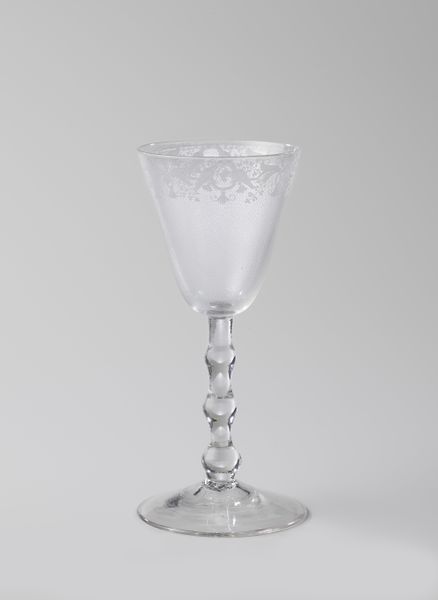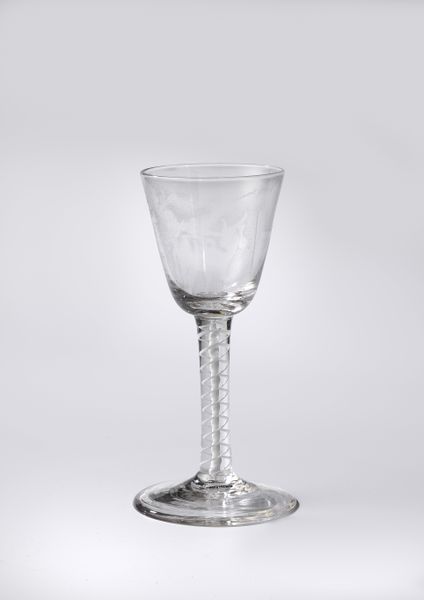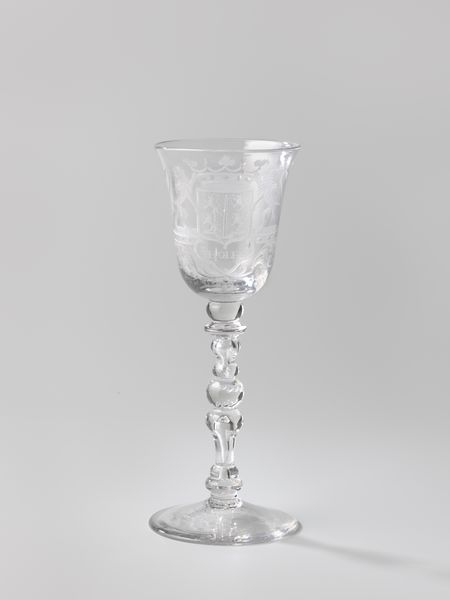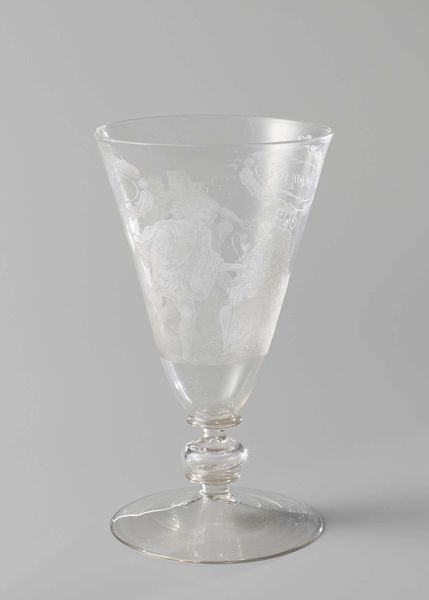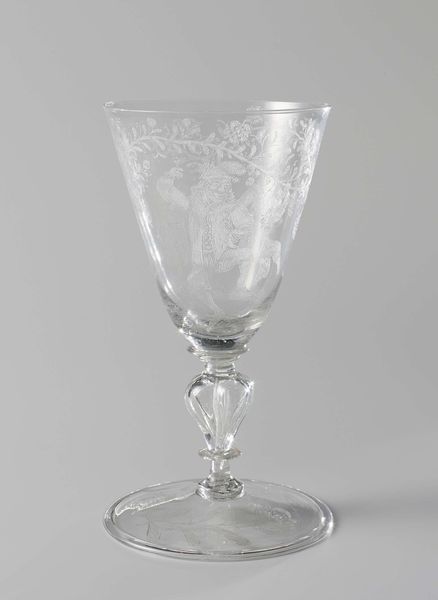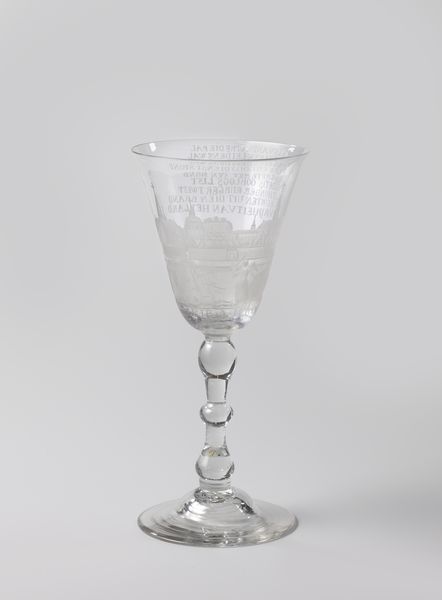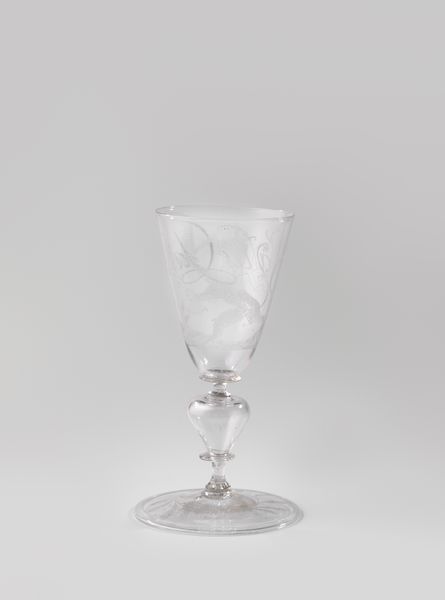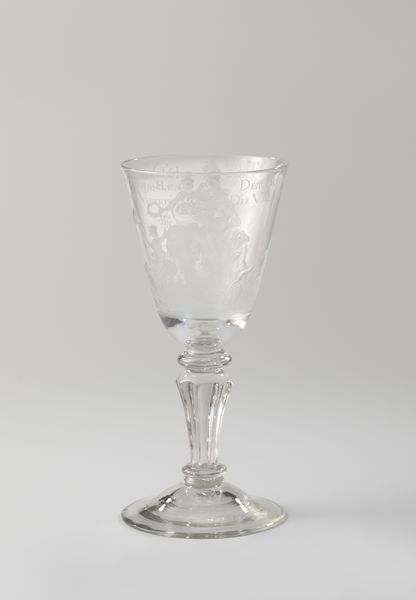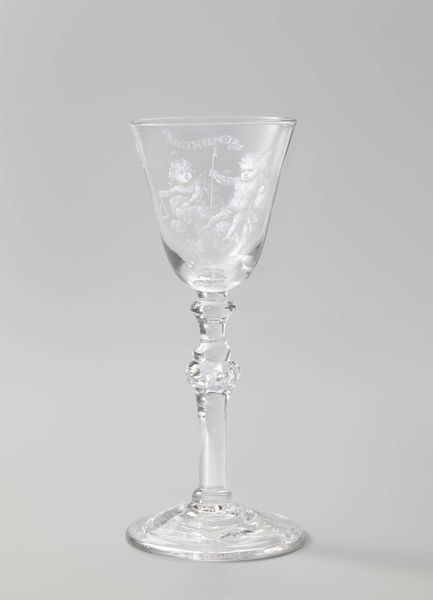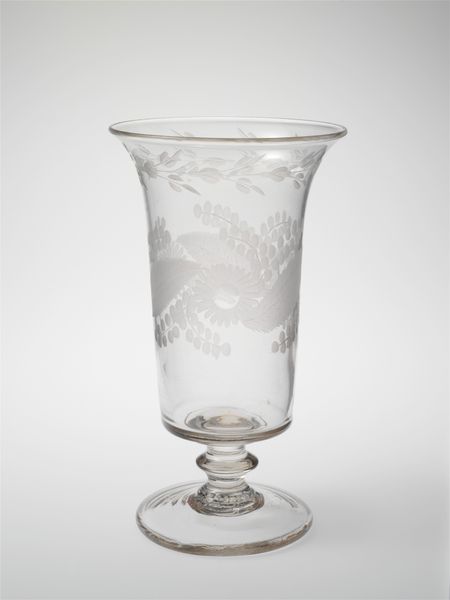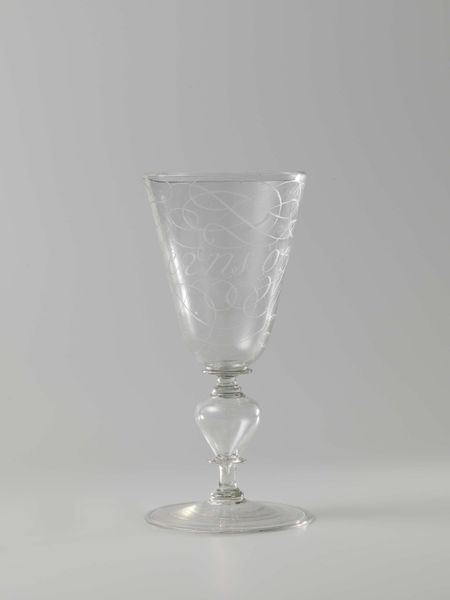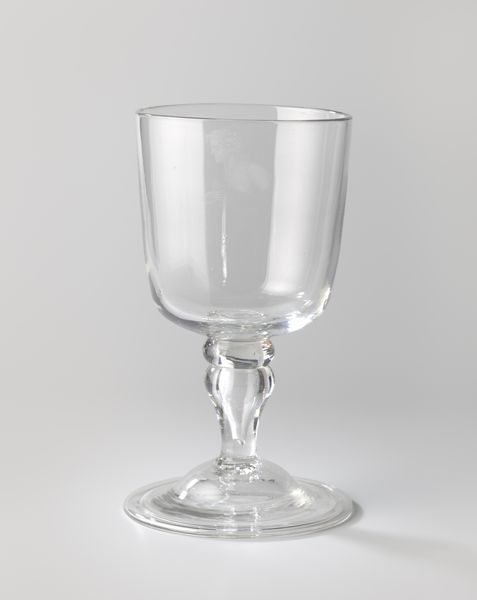
glass, engraving
#
allegory
#
baroque
#
figuration
#
glass
#
genre-painting
#
engraving
Dimensions: height 15.2 cm, diameter 8.5 cm, diameter 8.9 cm
Copyright: Rijks Museum: Open Domain
Curator: This delicate engraving on glass, titled "Wine Glass", dates back to the mid-17th century and resides here at the Rijksmuseum. Though its maker is anonymous, the artistry speaks volumes. Editor: It has an ethereal quality. The pale, almost ghostly, figure etched on the glass lends an air of solemnity, like a scene captured in a dream. Curator: Indeed, there’s more to it than meets the eye. Look closer—do you see the allegorical imagery? Cupid, it seems, is driving a chariot! This points to themes beyond mere drinking. Editor: I notice how the light interacts with the curvature. The glass distorts and refracts, lending a dynamism to what is essentially a static image. It's Baroque in that way. Curator: Absolutely. The very act of raising a glass then, became imbued with layered meanings. Wine, pleasure, but also ephemeral beauty, the swift passage of time… the Cupid driving a chariot becomes less about the joys of love, but its uncontrollable force. Editor: And the fragility of the glass itself – a potent symbol of life’s delicate nature. Holding such an object was a constant reminder of impermanence. It is also simply astonishing to engrave something this detailed on glass; so fragile to make. Curator: The continuous line and almost silvery presentation reinforce that delicate tension beautifully, considering that engraving as a medium is usually done on firmer stuff, and on a larger scale. It shrinks our known world, making it intensely personal. Editor: So much contained in this one object. A perfect miniature stage for allegory to be enacted in real life. Curator: Thinking about the rituals associated with using this glass, perhaps each sip was meant to be savored with deeper contemplation? Editor: Definitely an intriguing intersection of form, function, and symbolism! One small work opens up larger social understanding, even to us.
Comments
rijksmuseum almost 2 years ago
⋮
The bowl is engraved with scenes from the life of Bacchus, the god of wine. They are taken from illustrations by Jacob Matham in a book about Bacchus, published in 1616.
Join the conversation
Join millions of artists and users on Artera today and experience the ultimate creative platform.
